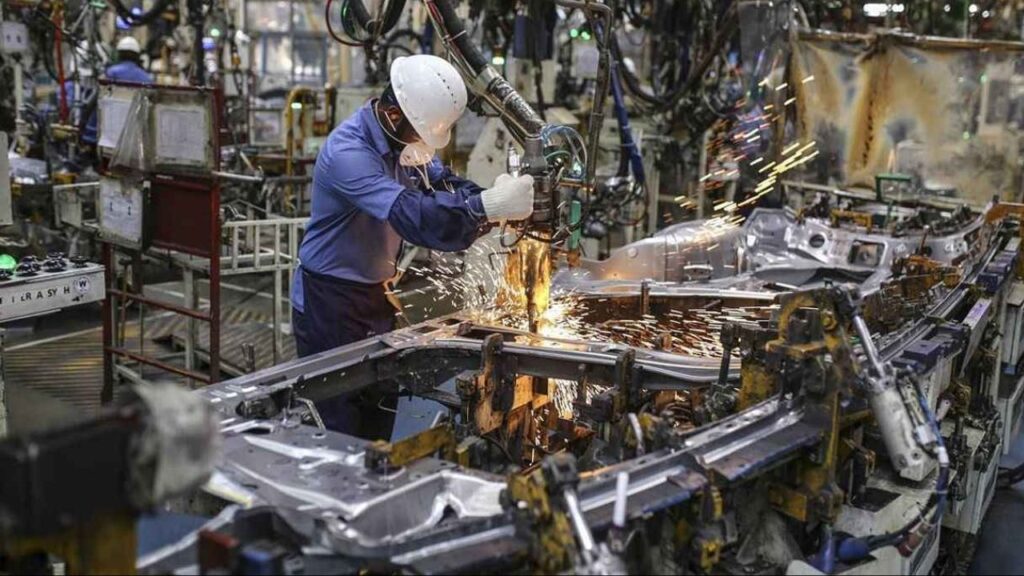India’s ambitious Production Linked Incentive (PLI) scheme has drawn investments totaling ₹1.61 lakh crore ($18.72 billion) as of November 2024, according to a recent statement by the Ministry of Commerce and Industry. The initiative, designed to promote domestic manufacturing across 14 key sectors, has so far led to the generation of ₹14 lakh crore ($162.84 billion) in sales, nearing the target of ₹15.52 lakh crore for the financial year ending March 31, 2025.
Driving Self-Reliance Through Sectoral Incentives
The PLI scheme forms a crucial part of India’s vision of becoming ‘Atmanirbhar’ or self-reliant. The government emphasized that this initiative has significantly contributed to boosting manufacturing capabilities, job creation, and export growth. With widespread participation from both local and global firms, the scheme has catalyzed production growth and expanded the country’s manufacturing ecosystem.
Over 750 Projects Approved with Strong MSME Participation
To date, 764 applications have been approved across the 14 PLI sectors. Among these, 176 beneficiaries are micro, small, and medium enterprises (MSMEs), participating in areas such as bulk drugs, telecom, white goods, pharmaceuticals, drones, and food processing. Collectively, the scheme has facilitated the creation of over 1.15 million direct and indirect jobs, underscoring its employment-generation potential.
Export Composition Shifts Toward High-Value Sectors
One of the major achievements of the PLI schemes has been the transformation of India’s export basket. The country’s exports are gradually moving away from traditional commodities toward high-value-added goods, such as electronics, processed foods, telecom products, and pharmaceuticals. Exports under the scheme have surpassed ₹5.31 lakh crore (approximately $61.76 billion), with notable contributions from sectors like mobile manufacturing and medical devices.
Disbursements and Timelines Reflect Project Phasing

Incentives worth ₹14,020 crore have been disbursed across ten key sectors, including IT hardware, automobiles, drones, food processing, and telecom. The ministry clarified that disbursement is typically made after the first year of production and that most projects are still in their implementation phase. Given the staggered nature of production timelines, many companies are expected to file claims and receive benefits in the coming months.
Specialty Steel Sees Mixed Results in Investment and Performance
Within the specialty steel segment, ₹20,000 crore has already been invested out of the committed ₹27,106 crore, creating 9,000 jobs so far. However, only ₹48 crore in incentives have been disbursed. The Ministry of Steel projects that ₹2,000 crore will be released by the end of the scheme’s lifecycle. Fourteen of the 58 approved projects have exited due to business strategy shifts or execution delays, but new interest has emerged in the second round of applications.
Fresh Investments Signal Continued Industry Interest
Thirty-five new companies have expressed interest in the next round of the PLI scheme for specialty steel, bringing with them a proposed investment of ₹25,200 crore. The Ministry of Steel is currently assessing these applications and will soon begin signing memorandums of understanding (MoUs). An estimated ₹3,600 crore in incentives is expected to be disbursed under this phase, signaling robust industrial appetite for government-backed manufacturing support.
Food Processing Sector Sees Steady Progress and Payouts
Under the PLI scheme for the food processing industry, claim submission deadlines are set for November 30 for millet-based products and December 31 for all other categories. Most beneficiaries file their claims in December, with disbursements typically occurring between January and March. For the 2022–23 fiscal year, ₹474 crore has already been disbursed, and the ₹700 crore target for 2023–24 is reportedly on track to be met.
Withdrawal of Few Beneficiaries Has Minimal Impact
Currently, the PLI scheme for the food processing sector has 171 active participants. The withdrawal of six companies is not expected to impact the programme significantly, as these exits were largely due to an inability to meet required investments or branding and marketing commitments abroad. The overall momentum of the scheme remains strong, supported by the continued interest and compliance of the majority of beneficiaries.

